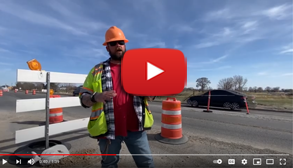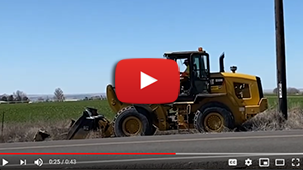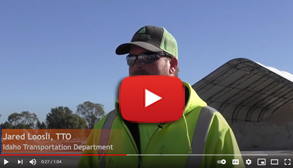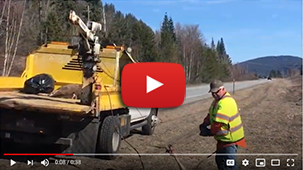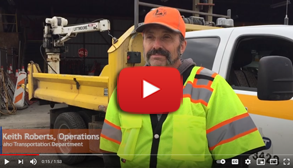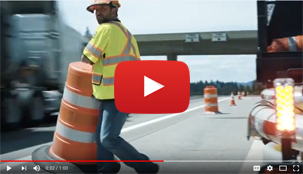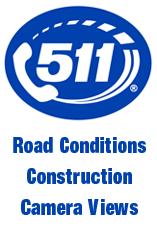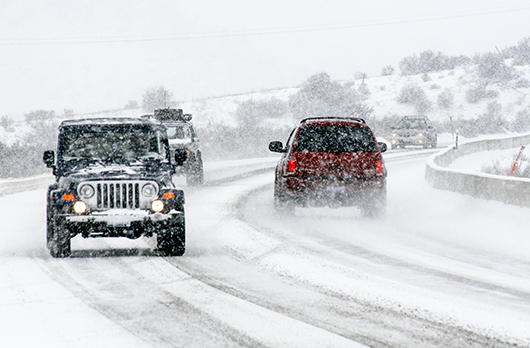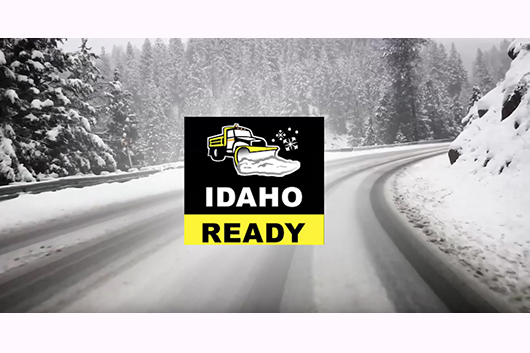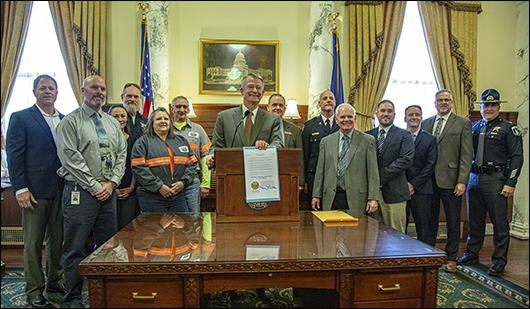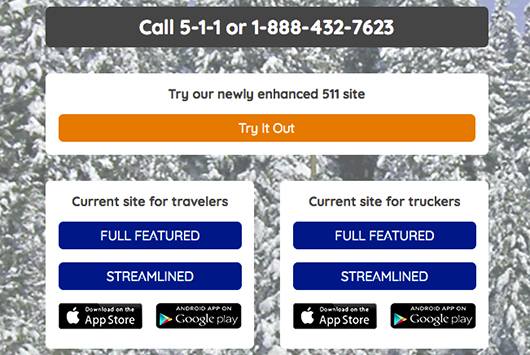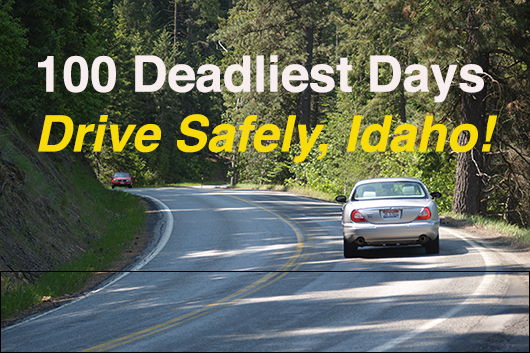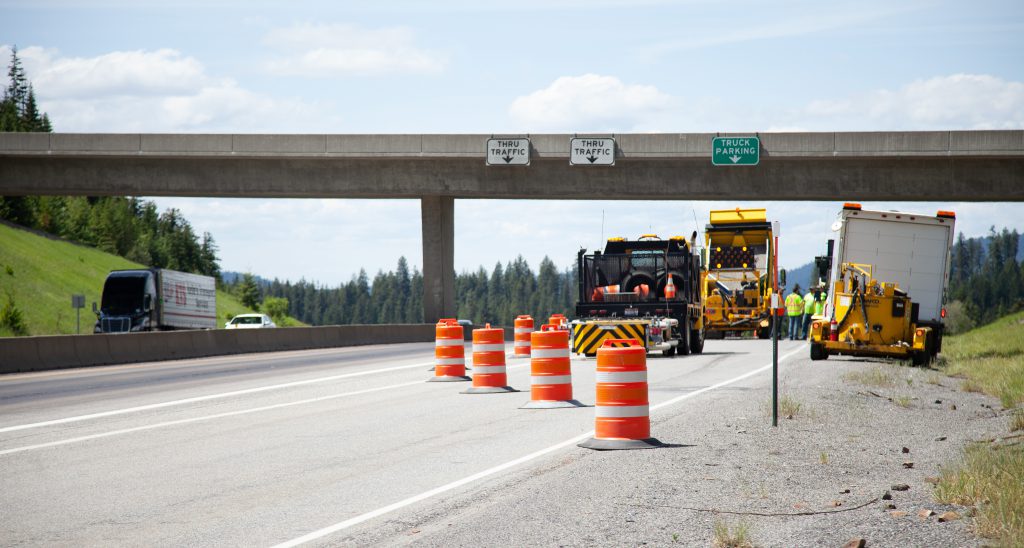Traveling Idaho
Idaho Ready
Plan ahead! Take a Winter Driving Class
Whether you are a young driver (or parent), new to the area, or are just looking for a refresher ahead of the coming winter season, ITD and Idaho State Police are teaming up to make sure you are covered with a variety of winter driving safety classes available across the state!
Winter Driving Training
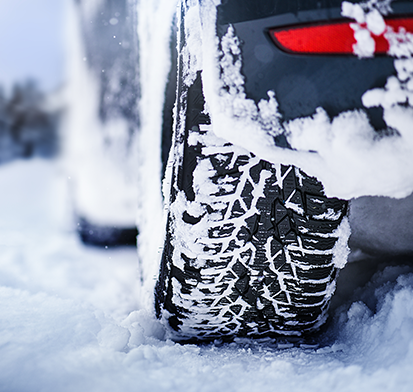
- From Coeur d’Alene to Idaho Falls, and throughout Idaho, 18 winter driving courses were held in 2024.
511 Road Report
Features:
Camera Views
Current Road Conditions
Current Weather Data
Load Restriction Routes
Message Boards
Rest Area Locations
Trucker Information
Go to 511.idaho.gov or Call: 511
Shifting the Conversation
Winter Safety Campaign
Be Here Tomorrow | SHIFT
VIDEO: Rules to LVE By
SHIFT | Drive Well Idaho
Learn about Idaho’s effort to SHIFT driving behaviors @ shift-idaho.org
Request a SNOW winter driving presentation
SNOW stands for Safely Navigate Our Winter, and SNOW events share safety tips for winter driving and give hands-on experiences with plow trucks to drivers, students and other interested groups upon request.
ITD snowplow operators visit your group and share their experiences keeping the roads safe. SNOW aims to teach drivers about snowplow safety with a short presentation and tour of a snowplow. It’s a way to connect drivers directly with the people and equipment that keep the roads safe and reduce the number of winter crashes.
Fill out the presentation request form and an employee will be in touch to schedule a presentation. Scheduling is subject to weather conditions, as all plows are used in every storm and may not be immediately available for a presentation.
- Request a Snow Presentation (Form)
- Please allow up to five days for a response.
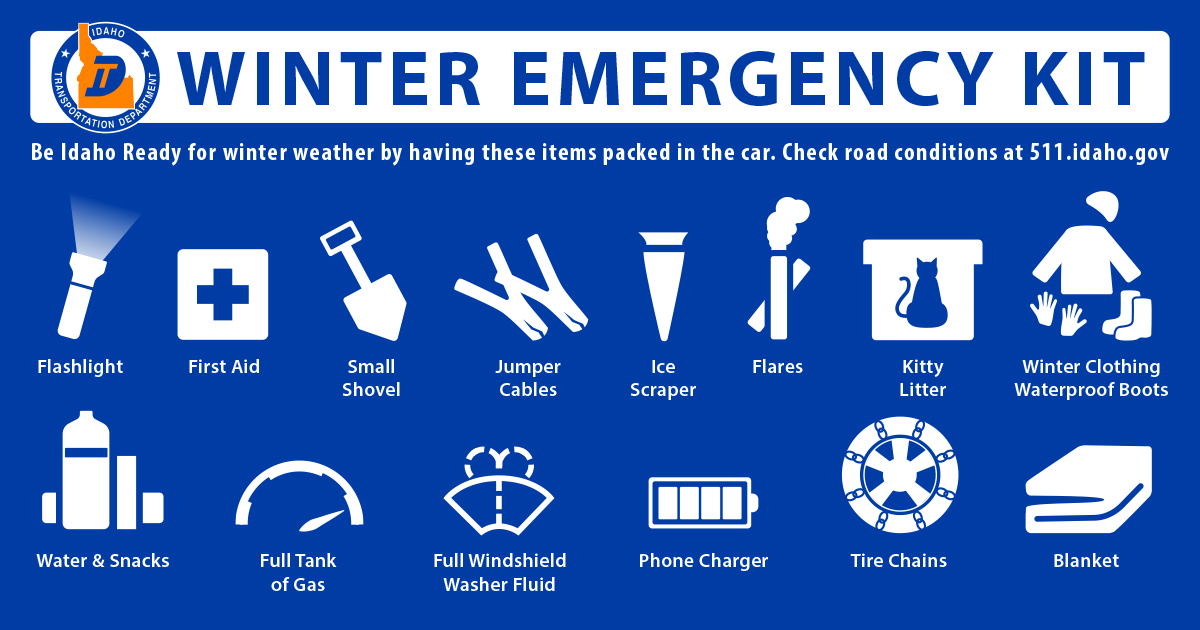
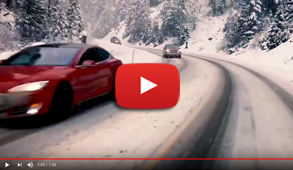
Road & Weather Conditions, Cameras & Construction
Be prepared for changing travel conditions all across Idaho
> Go to: 511.idaho.gov | Idaho’s 511 Road Report
• Learn more about Idaho highways at Winter Driving: Be Idaho Ready
• For construction project locations & details go to: itdprojects.idaho.gov
How to be safe around snowplows

- Do not pass a plow on the right. Plows have a 10-foot extendable wing plow on the right side that may be difficult to see in snowy conditions.
- Provide ample space for plows to work and steer clear of their blind spots. This also means increasing your following distance behind the plow.
- Practice patience and stay behind the plow for the safest road conditions.
- Plows often operate in pairs to clear multiple lanes; never position yourself between tandem plows.
- In case of a crash or if you need to stop on the side of the road, stay inside your vehicle for both your safety and that of our plow operators.
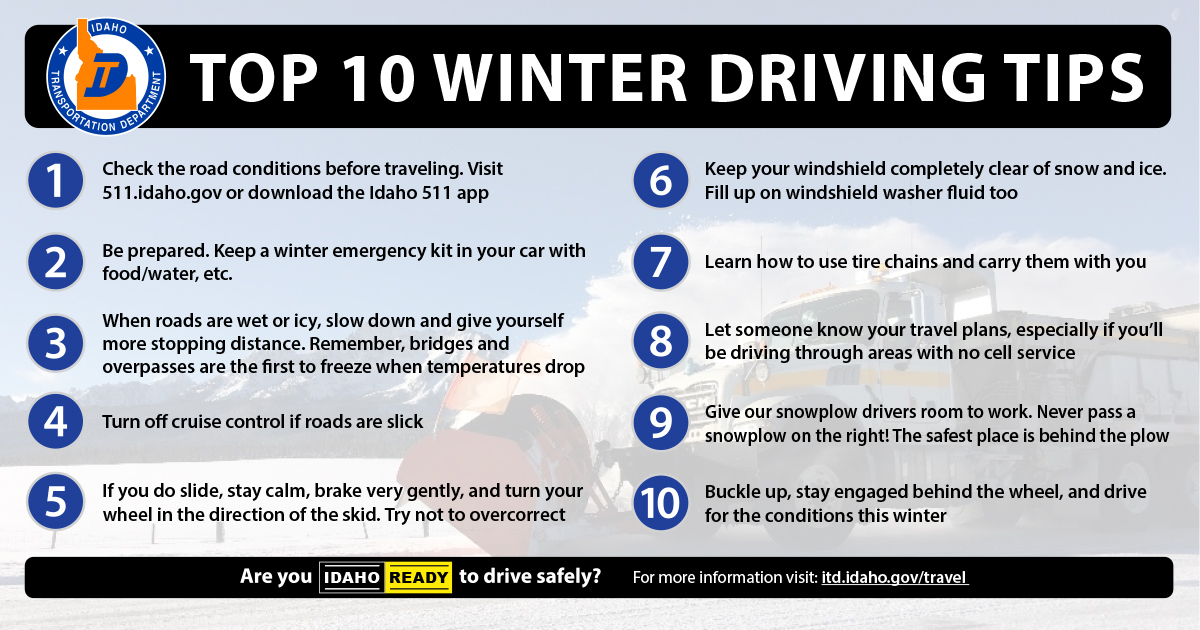
Winter Driving in Idaho
Whether you’ve lived in Idaho your whole life or are a new resident, it’s important to do everything you can to prepare for an Idaho winter. As the cold weather sets in, so do winter road conditions.
How do you prepare for winter travel in Idaho?
We recommend starting by calling 5-1-1 or visiting 511.idaho.gov to check road conditions and alerting friends and family of your travel plans (especially if you are traveling through areas with poor cellular service).
- Winter Driving Checklist: Is your vehicle ready for the road? Did you pack essential items in case of an emergency?
- Studded Snow Tire Dates: Legal use timeframes for Idaho and surrounding states
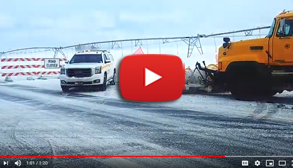
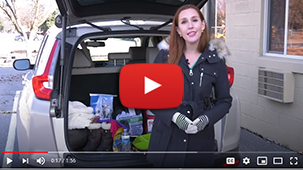

Travel News
Focus on Safety
Before you go, don’t forget to pack your winter car emergency kit
ITD launches annual winter driving safety campaign in advance of Thanksgiving travel
ITD & Governor’s Office collaborate to promote Traffic Incident Safety Week awareness
Improved, updated 511 Traveler Information System launched
Fatalities Decrease During 100 Deadliest Days
ITD reminds drivers to be mindful in work zones
511 Road Report
Download the Idaho 511 Road Report app to your mobile device
Go to the 511 road report website or call in with your phone
The web address is 511.idaho.gov | To hear the report, call 511 on your phone.
Users will need to create a 511 account to save custom routes & settings on the site.
- For questions go to Idaho 511 website & app FAQs
511 Road Report
Features:
Camera Views
Current Road Conditions
Current Weather Data
Load Restriction Routes
Message Boards
Rest Area Locations
Trucker Information
Go to 511.idaho.gov or Call: 511
Shifting the Conversation
Winter Safety Campaign
Be Here Tomorrow | SHIFT
VIDEO: Rules to LVE By
SHIFT | Drive Well Idaho
Learn about Idaho’s effort to SHIFT driving behaviors @ shift-idaho.org
Road Travel Links & Contact Info
- Boise Area / Ada County Traffic & Cameras | ACHD Traffic App
- Montana – 800-226-7623
- Nevada – 877-NVROADS
- Oregon – 503-588-2941
- Utah – 866-511-8824
- Washington – 800-695-7623
- Wyoming – 888-996-7623
- Yellowstone National Park – 307-344-738
- Canada
- Alberta, Canada – 855-391-9743
- British Columbia, Canada – 800-550-4997
Additional Resources
- Amber Alerts | National Center for Missing & Exploited Children
- Bike Map of Idaho
- Boat Transport in Idaho | Boat Inspections
- Community Transportation Association of Idaho
- National Interagency Fire Center (NIFC)
- National Weather Service
- Roadway Weather Forecast
- Tourism in Idaho
What are the weather conditions on the Idaho routes you plan to travel?
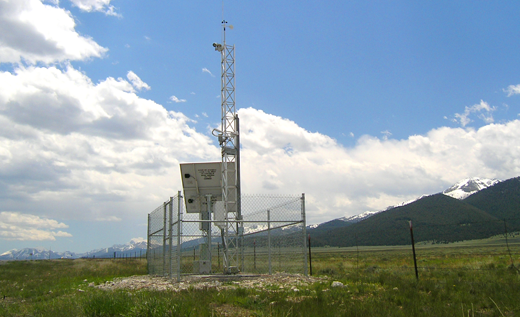 The Idaho Transportation Department (ITD) has developed a network of weather stations, also called Roadway Weather Information Stations or RWIS. These weather stations are located throughout Idaho along the highway system managed by ITD. Go online at 511.idaho.gov to see the latest weather data for each station location.
The Idaho Transportation Department (ITD) has developed a network of weather stations, also called Roadway Weather Information Stations or RWIS. These weather stations are located throughout Idaho along the highway system managed by ITD. Go online at 511.idaho.gov to see the latest weather data for each station location.
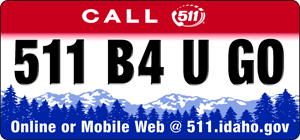 ITD maintenance crews use the weather stations to gauge local weather conditions and determine the best responses for road clearing. This RWIS data helps our snowplow drivers and other technicians to know how much salt, sand or de-icer to use, and where it is needed. The RWIS program is a highly successful system that many other states, and more than a dozen other countries, have requested program details.
ITD maintenance crews use the weather stations to gauge local weather conditions and determine the best responses for road clearing. This RWIS data helps our snowplow drivers and other technicians to know how much salt, sand or de-icer to use, and where it is needed. The RWIS program is a highly successful system that many other states, and more than a dozen other countries, have requested program details.
Using RWIS data, ITD crews have been able to keep roads clear and passable more than 85% of the time during winter storms. Back in 2010, that stood at just 28%. Go to the ITD Dashboard to see the latest report on “Time Highways Clear of Snow/Ice During Winter Storms.”
Move Over Law
AAA, ISP, ITD spotlight: Slow Down, Move Over, Save a Life
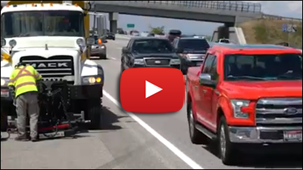
Safe Travel Videos
- Slow Down, Leave Some Space
- Working Along the Roadways
- Move Over Law Expansion
- Safety for Highway Workers
511 Road Report
Features:
Camera Views
Current Road Conditions
Current Weather Data
Load Restriction Routes
Message Boards
Rest Area Locations
Trucker Information
Go to 511.idaho.gov or Call: 511
SHIFT | Drive Well Idaho
Learn more about Idaho’s effort to SHIFT behaviors and emphasize engaged driving @ shift-idaho.org
“Move Over” Law
“Slow Down, Move Over” protects emergency responders and maintenance crews working to keep our roads safe
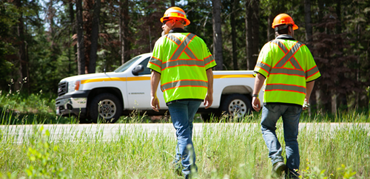 The “Move Over” law provided protections for police by requiring motorists to move over for law-enforcement personnel operating with flashing lights. Now drivers must also move over for other emergency responders to traffic incidents, too, such as tow truck operators using flashing lights in a stationary position.
The “Move Over” law provided protections for police by requiring motorists to move over for law-enforcement personnel operating with flashing lights. Now drivers must also move over for other emergency responders to traffic incidents, too, such as tow truck operators using flashing lights in a stationary position.
Vehicles pass by ITD workers every day on the state highways or the interstate at 60-80 mph or more. The sudden gush of air from the passing motorist or the rocking of the ITD vehicle as a semi passes by is a sober reminder that death is only feet away.
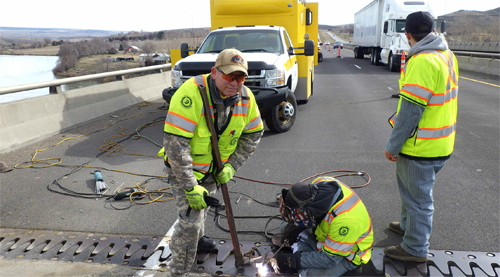 “The ‘Move Over’ Law makes an inherently risky job safer for our staff,” said Jerry Wilson, ITD Operations Engineer in North Idaho. “At highway speeds, it only takes a split second for an accident to happen, so making some space to allow our crews to maintain the roads makes the highways safer, both for us and the traveling public.”
“The ‘Move Over’ Law makes an inherently risky job safer for our staff,” said Jerry Wilson, ITD Operations Engineer in North Idaho. “At highway speeds, it only takes a split second for an accident to happen, so making some space to allow our crews to maintain the roads makes the highways safer, both for us and the traveling public.”
“We really appreciate the courtesy of other drivers who slow down and move over to give us a safer space to do our jobs,” said ITD Treasure Valley Incident Response driver Kyle Wright. “That buffer of space makes a big difference. The less we have to worry about vehicles moving past us, the more we’re able to focus on the incidents we’re working on, and hopefully remedy them more safely and quickly.”
Resources
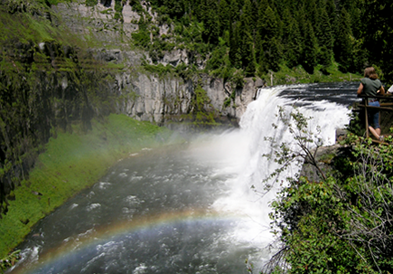
Idaho Maps
- Idaho Highway Map – Digital version (36 MB)
- The Idaho Highway Map includes paved and unpaved routes, cities, counties, scenic byways, historical trails, state and national parks, backcountry airports, ski areas, and more.
- Idaho Motorcycle Routes Map – Digital version
- The Idaho Motorcycle Map highlights scenic routes and designates technical sections for more experienced riders. Safety information and resources are also included.
- Motorcycle Safety Information
Websites for traveling Idaho
- Idaho’s Historical Markers Locations & Details
- Discover Idaho – The Official Idaho Travel Guide | visitid.org
- Road report: Idaho 511
- Transporting a Boat | Watercraft Inspections | Invasive Species
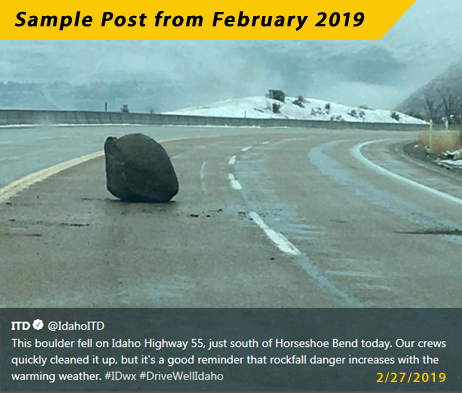
on transportation-related news.
IPlan | Idaho’s online mapping resource
Go to IPlan to find:
- Idaho Statewide System App – Route locations & mile point log
- Idaho General Information App – Route details & administrative boundaries
- Plus more Idaho geographical information at IPlan
Idaho History
Learn Idaho history as you travel the state & watch for the Historical Markers along your drive.
Idaho Transportation Department (ITD) Information
- Sign Up for “ITD News” Emails
- Idaho Autonomous & Connected Vehicle Testing Deployment Committee First Report to the Governor – 2018
- Flashing Yellow Arrow Traffic Signals: How do they work?
- Salt and Idaho Roads
- Speed Limits — Why do we need them? How are they set?
- YIELD sign at the railroad crossings. Did you careful look both ways when you saw the Yield sign?
- Seal Coating: Why do we do it?
- What is Access Management?
- Encroachment Permit: Why do I need one?
- How does ITD Prepare for Winter?
- Idaho’s Quick Clearance Law: What is it?
- Incident Response: What is it?
Spring Driving
Spring Load Limits
- For information on current restrictions, load limits & locations on Idaho highways go to: 511.idaho.gov
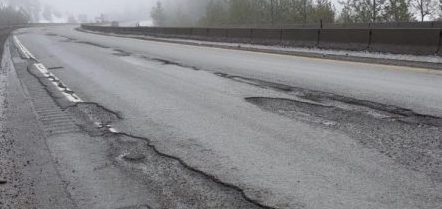
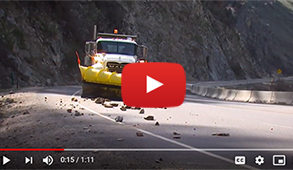
Every spring, ITD imposes spring breakup load limits to protect our highways. This practice minimizes damage to these roads from heavier vehicle loads using these routes during the freeze-thaw cycle. Spring breakup load limits are fairly common in areas with the most severe winter weather — northern and eastern Idaho.
Typically, larger commercial vehicles are limited to a lower speed and axle weight.
When subjected to high speeds and heavy loads, soft spots begin to wear, eventually breaking up and creating potholes.
Motorists are urged to be patient when traveling on highways where limitations have been placed.
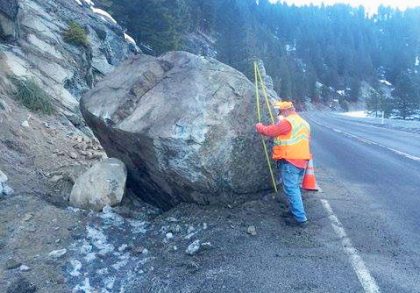 There’s nothing like a car-sized boulder resting in the middle of a highway to wreak havoc with your highway travels. Driving has its share of inherent risks, but ITD wants to do everything possible to narrow down the list of hazards.
There’s nothing like a car-sized boulder resting in the middle of a highway to wreak havoc with your highway travels. Driving has its share of inherent risks, but ITD wants to do everything possible to narrow down the list of hazards.
Every year, the potential exists for rockfall. If there’s moisture in the air, chances are pretty good there will eventually be rocks that tumble down to the road below. This is because when hillside soils get saturated by that moisture, they start to give way and can no longer hold back the rocks embedded in those soils. Precipitation in the form of snow, rain or even fog with a high moisture content increase the chances of a slide.
Not everyone will be like the massive landslide near Elk City in 2016, but it is a stark reminder of the dangers posed this time of year.
These events demonstrate an increased likelihood of rocks and debris releasing from hillsides each spring, especially for highways bordered closely by steep hillsides or mountains.
“Many of Idaho’s highways cut through forests and along steep slopes,” said ITD Emergency Program Supervisor Neal Murphy. “In the spring, when soils are saturated, the risk of falling debris is significantly higher. That is especially true in forests that have experienced recent fire or in mountainous terrain that is vulnerable to avalanches.”
The Idaho Transportation Department reminds drivers to plan ahead and check the 5-1-1 traveler advisory system (via phone or web) before heading out, especially to the mountains.
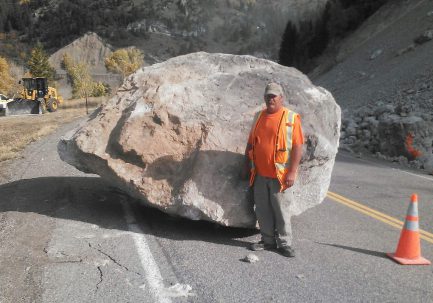 In the event of a slide or rocks on the road, drivers are asked pull onto the shoulder, turn emergency flashers on, and call local law enforcement, the local ITD office or nearest maintenance facility with a location description or milepost. Remain in the vehicle until help arrives.
In the event of a slide or rocks on the road, drivers are asked pull onto the shoulder, turn emergency flashers on, and call local law enforcement, the local ITD office or nearest maintenance facility with a location description or milepost. Remain in the vehicle until help arrives.
The landslide west of Elk City carried about 235,000 cubic yards of material – 47 million lbs. – down to the highway. The biggest boulder near Smiths Ferry was estimated at 29 tons. While those are staggering numbers, even much smaller debris could derail a motorcyclist or bicyclist.
A recent spring was highlighted by a 50-ton boulder coming down the hill on Warm Springs in Boise, a rockslide on Idaho Highway 97 in northern Idaho that carried an estimated 450 tons of debris, a huge boulder on Idaho Highway 55 at Smiths Ferry (above photo), and this massive boulder in eastern Idaho.
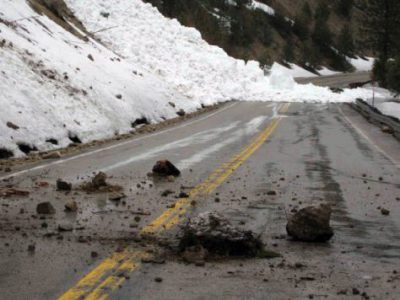 Spring snow conditions can be deceptive. While the air may feel warmer and thoughts turn to spring, often conditions are ripe for a springtime slide.
Spring snow conditions can be deceptive. While the air may feel warmer and thoughts turn to spring, often conditions are ripe for a springtime slide.
Our ITD avalanche forecasting crew remains busy into the spring, monitoring avalanche conditions. Even in years with less snowpack, warmer weather creates higher avalanche danger. It can be a time of high volatility from loose, wet snow. Spring can also hold avalanche hazards not encountered during the colder parts of winter. Snowpack and weather transitioning into a warmer and wetter spring pattern can result in snow instability.
Due to this risk, our avalanche crew continues to actively monitor snow pack and evaluate weather conditions outside of the traditional winter months. Their assessment guides decisions related to keeping motorists and our road crews safe.
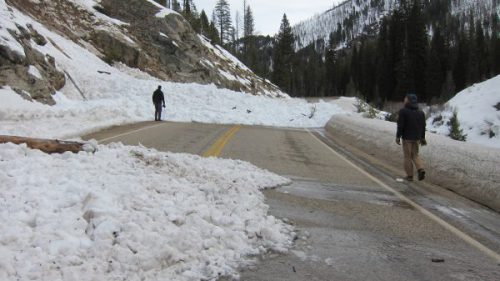 ITD encourages anyone that lives, works or travels through our state’s avalanche zones to visit 511.idaho.gov before you head out. It provides updated traveler conditions, information on potential closures or other hazards.
ITD encourages anyone that lives, works or travels through our state’s avalanche zones to visit 511.idaho.gov before you head out. It provides updated traveler conditions, information on potential closures or other hazards.
Work Zones
As you travel through work zones, slow down and drive engaged.
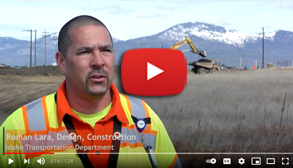
• Idahoans value work zone safety
• 511 Road Conditions & Construction
• ITD Construction Projects & Details
See the videos below covering Short Duration Operations for maintenance work and the experience from within the work zone.
Click for more ITD Videos
511 Road Report
Features:
Camera Views
Current Road Conditions
Current Weather Data
Load Restriction Routes
Message Boards
Rest Area Locations
Trucker Information
Go to 511.idaho.gov or Call: 511
SHIFT | Drive Well Idaho
Learn more about Idaho’s effort to SHIFT behaviors and emphasize engaged driving @ shift-idaho.org
Join the Conversation
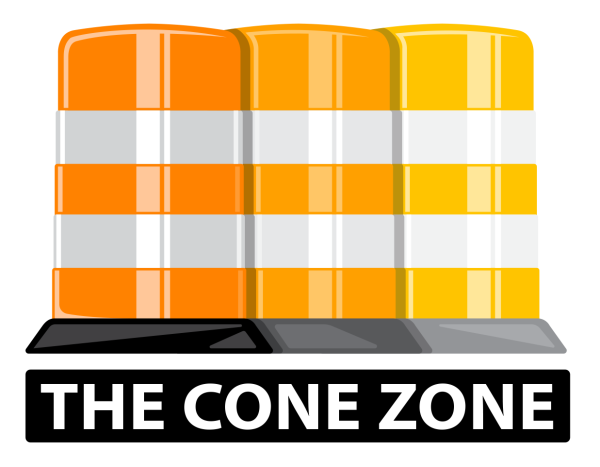
Work Zones: Short Duration Operations
Along with larger road construction projects, which are typically well-marked and have better visibility for drivers, the work of ITD’s highway maintenance crews also often includes a lot of Short Duration Operations. These can pop up anywhere, at any time. Whether it is a highway worker stopping to remove a shredded tire or animal carcass from the road, or performing maintenance work like an impromptu guardrail repair right next to the travel lanes, these jobs generally put workers closer to the road, and closer to danger – there is less time for the worker or the driver to take evasive action in those circumstances. Sadly, an ITD operator was killed just outside Arco during a Short Duration Operation, reminding us all of the importance of being safe and vigilant in all work zones across the state.
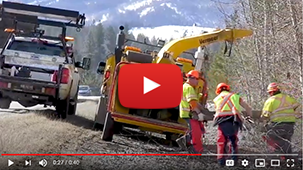
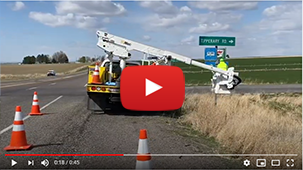
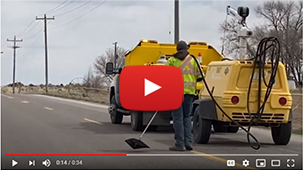
Drive Safe. Work Safe. Save Lives.

ITD recommends a common-sense approach to driving in work zones:
- Slow down and drive at the posted speed limit or at speeds appropriate for conditions.
- Adhere to traffic signs and follow the directions of flaggers and pilot cars, when present. Prepare for heavy equipment operating in the area.
- Watch for altered traffic patterns or reduced lane widths. Devote your full attention to driving and avoid distractions such as cell-phone use.
- Check before leaving home to determine whether you might encounter highway construction. Call 5-1-1, check 511.idaho.gov or download the 511 app.
- Expect delays and exercise patience.
- Always wear a seat belt.
